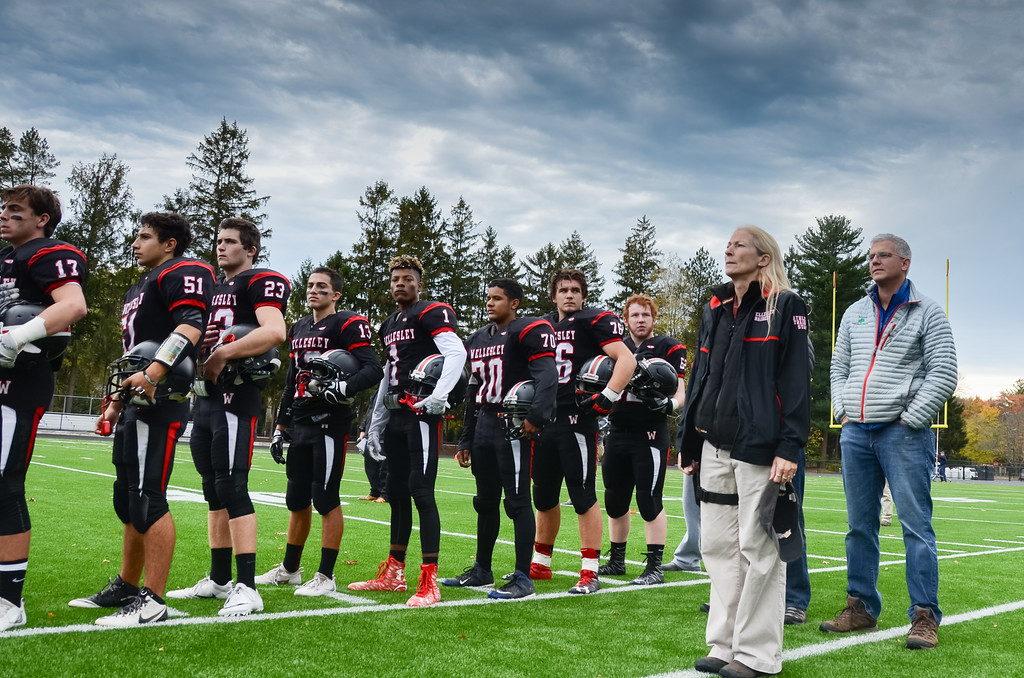A version of this article appeared on print in our November 2016 issue.
For the first time in ten years, the high school and School Committee launched a review of the Athletic department to determine its strengths and areas for improvement. School Committee sent out surveys to parents of high school students to provide their input on the status of the athletic program. The review determined that communication and transparency from the Athletic department on how it spends money were the main points of improvement. A School Committee meeting in October focused on findings from the review.
Spending was an issue for nearly 90% of those surveyed, with the main complaint being that the Athletic department has not been transparent with how it has funded programs. In contrast to the roughly 10% of those who reported that they agreed with the statement, “Wellesley Public Schools’ funding is transparent for each sport,” 32% of people said they either disagreed or strongly disagreed. The main concern over the lack of transparency is that every athlete must pay $250 to play any sport, but still many teams need booster clubs to fund their sport, while money from less expensive sports can fund more expensive ones.
Assistant Superintendent for Finance and Operations Judy Beliveau pointed out that booster clubs currently pay assistant coaches directly. She wants to resolve this by putting the assistant coach jobs on school payroll in hopes of eliminating many liability issues.
Athletic Director Mr. John Brown addressed these issues to an overflowing crowd of parents, student-athletes, town residents, school administration, and several varsity and assistant coaches at the meeting. “I take this review very seriously. I want this review to help me look inside myself,” Brown said. “I care very much about student athletes.”
In addition to the prominent issues of spending, feedback to and from coaches and approachability of athletic administration and coaches were other concerns for athletes and parents. Only 23% of people agreed that the the athletic program solicited and welcomed feedback.
Stacey Coady, a mother of a track athlete, criticized the athletic program for not taking action to prevent injuries, like her daughter’s which she felt could have been prevented with appropriate practice space. Coady said she faced backlash from others when she tried to find a safer practice space for indoor track than high school hallways.
According to Brown, the athletic program and the school do not control off-site facilities, and they awknowlege there is room for improvement.
Izzy Hartnett ’17, captain of the girls’ soccer team, said she faced resistance after attempting to bring up an issue regarding the fact that the team did not have a coach. She said the Athletic department told her that it was not her place as a student to challenge the department. She was encouraged to apologize, and allow her parents to discuss the issue instead.
Her response highlighted the issue of the importance of student voice in athletics; the majority of survey responses came from parents of high school students.
Despite the negative opinions about the athletic program, the program also received praise.
Notable strengths of the program found in the review were the “reasonable” activity fee of $250 per sport, the coaching and staff quality, the range of athletic offerings, and high participation rates.
Ms. MaryAnne McDonald, Athletic Department Secretary, pledged to continue to support the program and to make necessary improvements. “[Brown] has always guided our coaches and athletes in the right direction,” she said.
Former high school coach Mr. Alex Parella reflected on his positive experience with the program, too. Parella, a former part-time TV Video teacher and former assistant varsity Girls Basketball and Boys Lacrosse coach, praised Brown and McDonald for being supportive directors.
“I think there’s something really special here at Wellesley,” Parella said. “I had never envisioned myself forming the bonds… with fellow faculty members and coaches in the building and [with] the student athletes.”
Brown plans on resolving these issues and listening to the voices in the community. “We want the students to have a great educational athletic experience,” he said. “I feel that everyone needs to feel valued and respected, no matter what team or position they have within our school system.”
The next steps in resolving the issues will involve a standing advisory committee, which will continue to receive input on the program, and create short-term and long-term plans to rectify the issues at hand.

